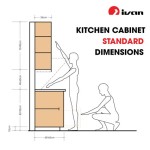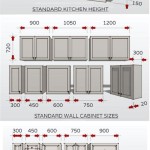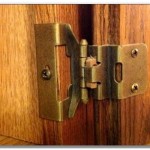Here is an article about the kitchen cabinet manufacturing industry, adhering to the specified requirements:
The Kitchen Cabinet Manufacturing Industry: An Overview
The kitchen cabinet manufacturing industry is a significant sector within the broader home improvement and construction markets. It encompasses the design, production, and distribution of cabinets used primarily in kitchens, but also in bathrooms, utility rooms, and other areas requiring storage solutions. The industry is characterized by a diverse range of manufacturers, from small, custom shops to large, mass-production facilities. Its economic health is closely tied to factors such as housing market trends, consumer spending, and macroeconomic conditions.
Demand for kitchen cabinets is driven by new home construction, remodeling projects, and replacement needs. New construction activity directly fuels demand as newly built homes require complete sets of kitchen cabinets. Remodeling projects, which often involve upgrading or replacing existing cabinets, also contribute substantially to industry revenue. Replacement demand arises from wear and tear, damage, or a desire to update the style and functionality of existing kitchens. The industry must adapt to changing consumer preferences regarding design, materials, and technological features to remain competitive.
The kitchen cabinet manufacturing industry operates within a complex value chain. It begins with the sourcing of raw materials, including wood, plywood, particleboard, hardware, and finishes. Manufacturers then process these materials, cutting, shaping, assembling, and finishing the cabinets. The completed cabinets are then distributed through various channels, including retail stores, home improvement centers, wholesale distributors, and directly to contractors and builders. Successful manufacturers must effectively manage their supply chains, production processes, and distribution networks to optimize costs and ensure timely delivery.
Globalization has had a considerable impact on the kitchen cabinet manufacturing industry. The rise of international competition, particularly from countries with lower labor costs, has put pressure on domestic manufacturers to improve efficiency and reduce costs. Many manufacturers have responded by investing in automation, streamlining production processes, and sourcing materials from overseas suppliers. The industry also faces challenges related to environmental sustainability, including responsible sourcing of wood and reducing waste in manufacturing processes. Consumers are increasingly demanding eco-friendly cabinet options, driving manufacturers to adopt more sustainable practices.
Key Drivers of Industry Growth
Several key factors influence the growth and performance of the kitchen cabinet manufacturing industry. Understanding these drivers is crucial for manufacturers to make informed business decisions and adapt to changing market conditions.
Housing market activity is a primary driver. An increase in new home construction directly translates to greater demand for kitchen cabinets. Similarly, a robust housing market encourages homeowners to invest in remodeling projects, including kitchen renovations. Fluctuations in interest rates, mortgage availability, and overall economic confidence can significantly impact housing market activity and consequently, the demand for kitchen cabinets. Manufacturers closely monitor housing market indicators to anticipate changes in demand and adjust their production accordingly.
Consumer spending patterns significantly affect the demand for kitchen cabinets. When consumers have more disposable income and are confident about the economy, they are more likely to undertake home improvement projects, including kitchen renovations. Conversely, during economic downturns or periods of uncertainty, consumers tend to reduce discretionary spending, which can negatively impact demand for kitchen cabinets. Manufacturers track consumer confidence indices and other economic indicators to gauge consumer spending trends and adjust their marketing and sales strategies.
Technological advancements in manufacturing processes also play a vital role. Automation, computer-aided design (CAD), and computer-aided manufacturing (CAM) technologies have enabled manufacturers to improve efficiency, reduce costs, and produce higher-quality cabinets. These technologies allow for greater precision, faster production times, and reduced material waste. Manufacturers who invest in these technologies are better positioned to compete in the market and meet the evolving needs of customers. The adoption of lean manufacturing principles and other operational efficiency strategies also contributes to improved productivity and profitability.
Major Trends Shaping the Industry
The kitchen cabinet manufacturing industry is constantly evolving, driven by changing consumer preferences, technological advancements, and economic forces. Several key trends are shaping the future of the industry.
Increased demand for customization and personalization is a notable trend. Consumers are increasingly seeking unique and personalized kitchen designs that reflect their individual tastes and lifestyles. This trend has led to a greater demand for custom and semi-custom cabinets that can be tailored to specific dimensions, styles, and finishes. Manufacturers are responding by offering a wider range of customization options, including different door styles, finishes, hardware choices, and storage solutions. Some manufacturers are also using online design tools and virtual reality technology to allow customers to visualize their customized kitchen designs before making a purchase.
The growing popularity of sustainable and eco-friendly cabinets is another significant trend. Consumers are becoming more aware of the environmental impact of their purchasing decisions and are increasingly seeking products that are made from sustainable materials and manufactured using environmentally responsible processes. This trend has led to a greater demand for cabinets made from recycled wood, bamboo, or other sustainable materials. Manufacturers are also adopting eco-friendly finishes, such as water-based paints and low-VOC adhesives, to reduce their environmental footprint. Certifications such as Forest Stewardship Council (FSC) are becoming increasingly important to demonstrate a commitment to sustainable forestry practices.
The rise of smart kitchen technologies is also influencing the design and functionality of kitchen cabinets. Smart appliances, connected lighting, and voice-activated controls are becoming increasingly integrated into kitchens. Cabinets are being designed to accommodate these technologies, with features such as built-in charging stations, concealed wiring, and integrated lighting systems. The Internet of Things (IoT) is enabling new possibilities for kitchen automation and convenience, and manufacturers are exploring ways to incorporate these technologies into their cabinet designs.
Challenges and Opportunities in the Market
The kitchen cabinet manufacturing industry faces several challenges, but also presents opportunities for growth and innovation. Navigating these challenges and capitalizing on these opportunities is essential for long-term success.
Intense competition from both domestic and international manufacturers poses a significant challenge. The industry is characterized by a large number of players, ranging from small, local shops to large, multinational corporations. This intense competition puts pressure on manufacturers to reduce costs, improve efficiency, and differentiate their products. Manufacturers must focus on developing a strong brand, offering unique designs, and providing exceptional customer service to stand out from the competition. Niche markets, such as high-end custom cabinets or eco-friendly cabinets, can offer opportunities for differentiation and higher profit margins.
Fluctuations in raw material prices can significantly impact profitability. The cost of wood, plywood, particleboard, hardware, and finishes can fluctuate due to factors such as supply chain disruptions, trade policies, and economic conditions. Manufacturers must effectively manage their supply chains and implement strategies to mitigate the impact of price volatility. This may include diversifying suppliers, negotiating long-term contracts, and using hedging instruments. Some manufacturers are also exploring alternative materials that are less susceptible to price fluctuations.
Labor shortages and skills gaps are emerging as a growing challenge. The industry faces a shortage of skilled workers, such as cabinet makers, finishers, and installers. This shortage is exacerbated by an aging workforce and a lack of younger workers entering the trades. Manufacturers must invest in training programs and apprenticeships to attract and retain skilled workers. Automation can also help to address labor shortages by reducing the need for manual labor in certain tasks. Collaborating with local schools and technical colleges can help to develop a pipeline of skilled workers for the industry.
The increasing demand for online sales channels presents a significant opportunity. Consumers are increasingly researching and purchasing kitchen cabinets online. Manufacturers must develop a strong online presence and invest in e-commerce capabilities to reach these customers. This may involve creating a user-friendly website, offering online design tools, and providing virtual consultations. Partnering with online retailers and home improvement platforms can also expand reach and access to new markets. A robust online strategy is becoming essential for competing in the modern kitchen cabinet market.
Adapting to changing building codes and regulations is also critical. Building codes and regulations related to energy efficiency, fire safety, and accessibility are constantly evolving. Manufacturers must stay informed about these changes and ensure that their products comply with the latest requirements. This may involve modifying cabinet designs, using different materials, or implementing new manufacturing processes. Collaborating with industry associations and regulatory agencies can help to stay ahead of these changes and avoid potential compliance issues.

Cabinet Manufacturing Metropolitan Cabinets

Cabinet Manufacturing Metropolitan Cabinets

Cabinet Manufacturing Metropolitan Cabinets

Cabinet Manufacturing Metropolitan Cabinets

Top 10 China Kitchen Cabinet Factory Pa

Custom Kitchen Cabinets Manufacturer From China Pa

Cabinet Machinery

How Are Kitchen Cabinets Made Manufacturing Ultimate Guide

About Us Vina

About Us Vina
Related Posts








